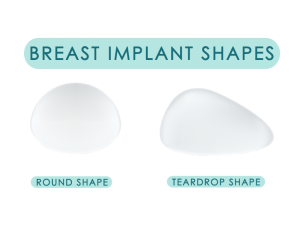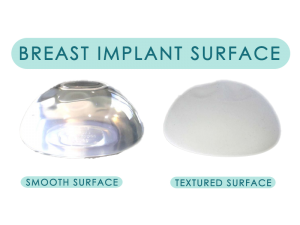Breast augmentation
Breast augmentation (implant)
AKA “boob job” as commonly known is the procedure, which aims to increase your breast size with the help of either breast implants or your own fat.
Who could benefit from a breast augmentation?
To undergo this procedure is a very personal issue; make sure this is what YOU want and not what someone else wants you to have done!! You could benefit from breast augmentation if you are unhappy with the size or the shape of your breasts. This may be due to them not having ever fully developed or perhaps not having developed symmetrically- the same on both sides. You may also consider this procedure if you feel your breast are not of an adequate volume or that you have lost volume/shape due to aging, weight loss or pregnancy.
Please be advised that breast augmentation alone cannot address a sagging breast. Such presentations are often best corrected with a combination of breast augmentation as well as a breast lift.
Evaluation for a breast Augmentation:
Apart from a detailed medical history, during a breast augmentation consultation your breast size, shape and the size and position of your nipples will be evaluated and discussed. Your skin quality will also be taken into account. Family history of breast cancer, previous or planned pregnancies will also be taken into consideration. It is not advisable to consider breast augmentation soon after childbirth or completion of breast-feeding.
During the consultation types of breast implants and their placement in relation to your breast tissue and muscle will also be discussed. It is important that you understand all aspects of your planned breast augmentation and if unsure make sure to ask questions.
Characteristics of breast implants:
There are many reputable manufacturers in the market and numerous breast implants are available for consideration. Several features can distinguish a breast implant:
1-Implant shape
–Round implants give a better breast projection and better improve upper breast fullness. One advantage of these implants is that because they are round there is no concern about them rotating once inserted unlike anatomical shaped implants.
–Anatomical Implants also known as tear-shaped implants tend to give a more natural look. They offer less upper breast fullness but can improve the nipple positioning and are therefore useful when one aim of the breast augmentation is to somewhat improve the vertical positioning of the nipples. This does not mean that their use would alleviate a severely drooping breast. One concern regarding their use is that once inserted if they later rotate you may need to undergo further surgery to realign them unto the desired position.
2-Implant fill
–Saline-filled implants as the name implies are filled with normal saline- water. The advantage of this is that if the implant outer shell leaks for any reason then basically the released saline is simply reabsorbed by the body. The disadvantage is that they are less natural to touch and once leaking collapse completely. They are more popular in North Americas and less so in Europe and the rest of the world. A more form-stable version of saline-filled implants is nowadays also available in the market.
-Silicone-filled implants are filled with cohesive silicone gel. This gives the implant a more natural feel hence they are more popular worldwide. However if the outer shell of these implants starts leaking, silicone is eventually released within the implant cavity. Unlike saline implants these implants will not collapse but your body cannot break down silicone, therefore you must replace the implant as soon as possible. What all this means is that it is advisable to carry out annual ultrasound or MRI scan to ensure the implant integrity is maintained and present to your plastic surgeon for annual check ups.
3-Implant surface:
-Smooth-surfaced breast implants: This type of surface offers a softer feeling on palpation and a slightly more natural look during animation –body movement. The draw back is that in thin individuals it is prone to rippling.
-Textured surfaced breast implants: can be divided in macro-textured and micro-textured. Macro-textured implants are out of favour due to increased risk of BIA-ALCL – please see below. Micro-textured implants offer a better tissue grip and as such are less prone to mal-positioning. Studies have shown that particularly if placed below the muscle they have a lower tendency of capsular contracture- please see below.
How is breast Augmentation done?
Prior to breast augmentation surgery you have to make sure you have had a full blood test, as directed by your surgeon as well as either a breast ultrasound or mammogram. The choice of suitable implant, it’s positioning in relation to your chest muscle and placement of the incision will have been discussed during consultation. The procedure is usually carried out under general anaesthesia. The incision is placed strategically to ensure it is not too visible. The preferred option is placing the incision along your breast fold -inframammary fold. Alternatively it can be placed along your areolar -periareolar incision. The size of the incision varies depending on the type and size of implant. Following the incision a pocket is created either above the pectoral muscle -subglandular placement, or below the muscle – submuscular/dual plane placement. This decision is made based on your presentation, the type of implant and the desired end result. The incision is closed and a support bra is applied over your dressings.
Risks associated with breast augmentation!
Apart from possible risks associated with general anaesthesia, as with any surgery there is always a risk of bleeding, haematoma, poor wound healing as well as infection. More specific risks include rippling, changes in your nipple sensation, intractable pain and seroma formation – fluid collection. Late complications of breast augmentation include implant malpositioning, implant leakage, implant rupture and capsular contracture. This is thickening of the capsule enveloping the implant, which eventually leads to hardening and deformation, requiring removal. Late seroma formation may also be a sign of another serious complication namely Breast Implant Associated-Anaplastic Large Cell Lymphoma – please see below.
Please be advised that breast implants are prone to wear and tear. Regardless of type and manufacturer it is prudent that you carry out annual check up as well as consider changing the implants after 10-12 years.
Breast implant associated-anaplastic large cell lymphoma (BIA-ALCL)
Breast Implant Associated-ALCL is a serious adverse complication associated largely with macro-textured and to a much lesser degree micro-textured breast implants. It is not known to be associated with smooth-surfaced implants. Most reported cases of BIA-ALCL were attributed to a particular manufacturer that has since been withdrawn from the market. However it is a development requiring urgent medical referral and as such one that you should be well aware of before deciding to go through with breast augmentation.
Recovery following breast augmentation
You will stay overnight following surgery. There will be a drain –plastic tube- coming out of each side, which will collect excess fluid/blood. These are typically removed the next morning before discharge. Your breast will be swollen and will remain so for the first 2-3 weeks, the swelling subsiding gradually. Pain and discomfort typically does not last more than 5-7 days. Your surgeon will prescribe painkillers and any other medication deemed necessary for you. The support bra provided will have to be worn for 8 weeks. During the first two weeks you should avoid driving, lifting heavy objects or any sudden movements. Sutures are absorbable but the knots may need removing after two weeks. Exercise should be avoided for the first 6-8 weeks depending on your recovery. Following surgery you are expected to return to us for follow up visits after a week and then again at 2 weeks, 3 months and 12 months from then on annually.
Breast augmentation (fat grafting)
AKA “breast lipofilling” is a procedure, which aims to IMPROVE your breast shape and to a lesser degree size with the help of your own fat harvested from elsewhere on your body.
Who could benefit from a breast augmentation with fat grafting?
To undergo this procedure is a very personal decision; make sure this is what YOU want and not what someone else wants you to have done!! You would most likely benefit from breast lipofilling if you were unhappy with the shape of your breasts e.g. lacking upper breast fullness or breast asymmetry. If you would like to have noticeable breast augmentation and choose fat grafting over implant insertion please be aware that one procedure may not be adequate and a second or even a third procedure may be necessary to achieve the result you want. Breast augmentation with fat grafting is best reserved for patients who would like mild/moderate changes in size or shape. It is also limited by the amount of excess fat available elsewhere for harvesting. Breast lipofilling alone cannot address a sagging breast. Such presentations are often best corrected with a combination of breast augmentation (implant or fat grafting) as well as a breast lift.
Evaluation for a breast Augmentation with fat grafting:
Apart from a detailed medical history, during a breast lipofilling consultation your breast size, shape and the size and position of your nipples will be evaluated and discussed. Your skin quality will also be taken into account. Personal and family history of breast cancer, previous or planned pregnancies will also be taken into consideration. It is not advisable to consider breast augmentation soon after childbirth or completion of breast-feeding. You will also be evaluated for potential fat harvesting sites. This could be your tummy, thighs or anywhere that you feel is hard to shift.
During the consultation advantages and limitations of breast fat grafting will be discussed. It is important that you understand all aspects of your planned breast procedure and if unsure make sure to ask questions.
How is breast fat grafting/lipofilling done?
Prior to breast fat grafting surgery you have to make sure you have had a full blood test, as directed by your surgeon as well as either a breast ultrasound or mammogram. The procedure can be carried out under general anaesthesia or local anaesthesia depending on the extent of lipofilling required. Initially fat is harvested –liposuction- with the help of specially designed harvesting cannulas and processed, ready for grafting. The collected processed fat is then finely grafted using another specially designed cannula by means of serial injections into your breast’s fatty tissue. This step is limited by the amount of fatty tissue covering your breast glandular tissue. Finally the small incisions are closed and a support bra is applied over your dressings.
Over time some loss of variable amount of transferred fat is expected. This may be any where between 20-40%.
Risks associated with breast augmentation fat grafting!
Apart from possible risks associated with general anaesthesia, as with any surgery there is always a risk of bleeding, haematoma as well as infection. Also it is possible to develop a seroma– fluid collection-, breast cysts and microcalcifications. Due to the nature of this procedure you should also be aware of the risk of DVT and pulmonary embolism, particularly fat embolism.
Recovery following breast fat grafting!
You may stay overnight following surgery if you have had the procedure done under general anaesthesia. Otherwise you will be discharged a few hours following surgery. Your breast will be swollen and will remain so for the first 2-3 weeks, the swelling subsiding gradually. Pain and discomfort is typically associated with the body region having undergone liposuction. Your surgeon will prescribe painkillers and any other medication deemed necessary for you. The support bra and compression garment provided will have to be worn for 8 weeks. During the first two weeks you should avoid strenuous activity and lifting heavy objects or any sudden movements. Sutures are removed after a week. Exercise should be avoided for the first 4-6 weeks depending on your recovery. Following surgery you are expected to return to us for follow up visits after a week and then again at 2 weeks, and 3 months.
How much does it cost?
Breast augmentation
- With implant
- Depending on implant type (Mentor / Polytech implant, Motiva implant, Blite implant)
Breast augmentation with fat transfer
- With fat transfer
Hybrid breast augmentation
- With implant and fat
Breast augmentation & lift
Book an appointment
Send a Message for Us!


